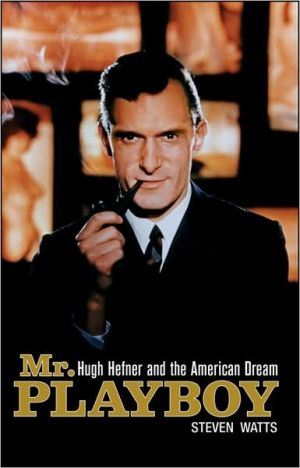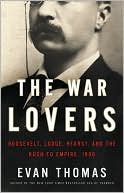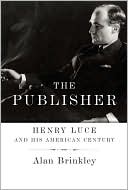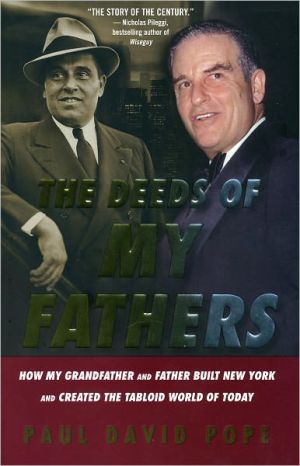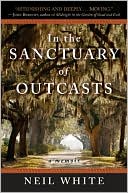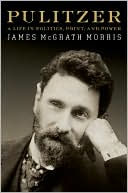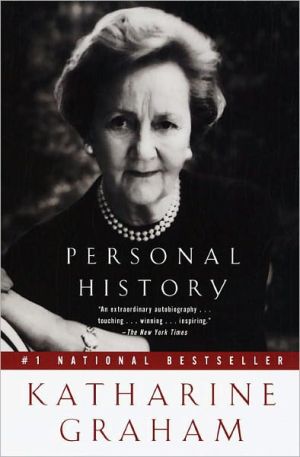Mr. Playboy: Hugh Hefner and the American Dream
The real Hugh Hefner-the extraordinary inside story of an American icon\ "Riveting... Watts packs in plenty of gasp-inducing passages."-Newark Star Ledger\ "Like it or not, Hugh Hefner has affected all of us, so I treasured learning about how and why in the sober biography."-Chicago Sun Times\ "This is a fun book. How could it not be? Watts aims to give a full account of the man, his magazine and their place in social history. Playboy is no longer the cultural force it used to be, but it made...
Search in google:
"In Mr. Playboy, historian and biographer Steven Watts argues that, in the process of becoming fabulously wealthy and famous, Hugh Hefner has profoundly altered American life and values. Granted unprecedented access to the man and his enterprise, Watts traces Hef's life and career from his midwestern, Methodist upbringing and the first publication of Playboy in 1953 through the turbulent sixties, self-indulgent seventies, reactionary eighties, and traditionalist nineties, up to the present. He reveals that Hefner, from the beginning, believed he could overturn social norms and take America with him." Throughout, Watts offers singular insights into the real man behind the flamboyant public persona. He shows Hefner's personal dichotomies - the pleasure seeker and the workaholic, the consort of countless Playmates and the genuine romantic, the family man and the Gastby-like host of lavish parties at his Chicago and Los Angeles mansions who enjoys well-publicized affairs with numerous playmates, the fan of life's simple pleasures who hobnobs with the Hollywood elite. The Barnes & Noble Review Two-thirds of the way into Steven Watts's new biography of Hugh Hefner, the infamous publisher summarizes his brainchild's mission. "What the book is first and foremost: a lifestyle magazine devoted to how one spends one's leisure time." Thankfully for Hefner, Watts, and readers of this biography, there's so much more to the story of Playboy and what was for a time its vast commercial empire and cultural reach. Watts, a University of Missouri history professor, entertainingly explains the influence of Hefner over the last six decades, when he and Playboy both shaped and reflected American society. The story, Watts insists, goes beyond sex and consumerism. "The question of how and why the publisher of a risqué men's magazine was able to garner such influence, and even prestige, has perplexed many observers." Watts' answer: "[O]ver the last half century Hefner has played a key role in changing American values, ideas, and attitudes. From the beginning, his enterprise was about more than dirty pictures . It comprised a historical force of significant proportions." Launched in 1953 (and featuring among its enticements nude photos of Marilyn Monroe), and the publication quickly became popular and influential. Hefner adopts the mantle of a revolutionary fighting the Establishment: "We dared to suggest that there were other ways of living your life." From the beginning, Watts writes, "The magazine became a kind of cultural litmus test for judging the positive or negative direction of modern American culture." Needless to say, not everybody appreciated the publication or the Hef-embodied Playboy lifestyle. Conservatives, religious groups, and feminists said he represented the decline of Western civilization. As Watts says, "Few Americans have aroused greater controversy in ascending to fame and fortune." --Cameron Martin
Click to read or download
Introduction The Boy Next Door 1Pt. I Beginnings1 A Boy at Play 112 Boot Camp, College, and Kinsey 343 The Tie That Binds 49Pt. II Ascent4 How to Win Friends and Titillate People 695 Hedonism, Inc 856 The Pursuit of Happiness 1057 An Abundant Life 1238 Living the Fantasy 143Pt. III Triumph9 The Philosopher King 16910 The Happiness Explosion 18711 Make Love, Not War 20612 What Do Women Want? 22813 Down the Rabbit Hole 25014 Disneyland for Adults 272Pt. IV Malaise15 A Hutch Divided 29716 The Dark Decade 32317 The Party's Over 34618 Strange Bedfellows 367Pt. V Resurgence19 The Bride Wore Clothes 39120 All in the Family 40721 Back in the Game 426Epilogue: Playboy Nation 447Notes 455Index 515
\ From the PublisherJust past the round rotating bed, beyond the hot-tub grotto but before the pajama-draped walk-in, lies … what? If we’re to believe this book, it’s the Truth about Hugh Hefner—and, by proxy, about American life since the 1950s. Of course, the larger legacy of Playboy has been considered long and well (in these pages a couple of years ago, and elsewhere). But Watts, a history professor prone to interpreting American Dreamers (he has written stellar works on Henry Ford and Walt Disney), is wise to draw a narrow bead on Hef qua Hef, dividing his life into tidy quadrants of postwar influence and iconography: as sexual liberator, avatar of consumerism, pop-culture purveyor, lightning rod for feminist ire. He also succeeds in identifying and exploring raging personal paradoxes—hedonist and workaholic, libertine and romantic, provocateur and traditionalist—while resisting the urge to attempt reconciliation. The Horatio-Alger-with-a-libido case he makes—where else but in America could a repressed midwestern boy rise, and fall into so many sacks, while creating and brand-managing a multimedia empire?—is only intermittently convincing. Still, there’s plenty to enjoy here, from the factual wealth (Watts was granted access to the vast Playboy vaults and draws heavily on his subject’s compulsively kept scrapbook collection) to the photographs aplenty (some offer revelatory glimpses; others give off the whiff of stale cheesecake) to the fundamental pleasures of watching a larger-than-life figure scuttle social norms and satisfy his own lavish urges. (The Atlantic, March 2009)"Riveting... Watts packs in plenty of gasp-inducing passages." (Newark Star Ledger)"Like it or not, Hugh Hefner has affected all of us, so I treasured learning about how and why in the sober biography." (Chicago Sun Times)"This is a fun book. How could it not be? Watts aims to give a full account of the man, his magazine and their place in social history. Playboy is no longer the cultural force it used to be, but it made a stamp on society." (Associated Press)"In Steven Watts' exhaustive, illuminating biography Mr. Playboy, Hefner's ideal for living -- marked by his allegiances to Tarzan, Freud, Pepsi-Cola and jazz -- proves to be a kind of gloss on the Protestant work ethic." (Los Angeles Times)When Hugh Hefner quit his job at Esquire to start a magazine called Playboy, he didn't just want to make money. He wanted to make dreams come true. The first issue of Playboy had a Sherlock Holmes story by Sir Arthur Conan Doyle, an article on the Dorsey brothers, and a feature on desk design for the modern office, called "Gentlemen, Be Seated." Hefner wrote much of the copy himself and drew all the cartoons. But the most memorable part by far was the set of pictures he bought from a local calendar printer of a scantily clad Marilyn Monroe.In this wise and penetrating biography, intellectual historian Steven Watts looks at what Hugh Hefner went onto become, and how he took America with him. Hefner became one of the most hated and envied celebrities in America, dating a long list of his magazine's beauties and always standing just barely on the wrong side of decency and moral uprightness. He also, at one time, had 7 million subscribers to his magazine. Though in time he would lose readers to more explicit magazines on one side and "lad" magazines on the other, the Playboy brand never lost its luster."...highly-readable and thought-provoking biography written by academic historian, Stephen Watts" (Desire, November 2008)Hugh Hefner started Playboy magazine in 1953 using purchased photos of Marilyn Monroe, and including the article "Miss Gold Digger 1953" about women who "manipulate the legal system for alimony." Hefner positioned the magazine as respectable, with articles by celebrated writers, interviews, and advice columns, accompanied with photos of nude models and ads, all combined to help promote a notion of "the good life." And so it was in his publicly lead private life, complete with famous people, naked women (he was allowed to date other people, his girlfriends were not), and a home in the "Playboy mansion." Watts outlines the man and magazine's influence on the country's notions of personal liberation, sexual freedom, and material abundance. Clocking in at over 500 pages, this is not a gossip book but a well-documented biography written with access to Hefner's over 1800 scrapbooks, the company archives, and interviews. Watts finds Hefner comparable to the subjects of his other books about Henry Ford and Walt Disney in that all were major contributors to aspects of the American dream. Recommended for public libraries and cultural studies collections.—Lani Smith, Ohlone Coll. Lib., Neward, CA (Library Journal, September 1, 2008)As he did in his previous books on Henry Ford (The People's Tycoon) and Walt Disney (The Magic Kingdom), Watts carefully details the life of Hugh Hefner and the influence his Playboy magazine has had on American culture. Using unrestricted access to the magazine's archives, Watts skillfully charts the intersection of Hefner's professional and personal history: the “sexual titillation” of his first issue; his mid- to late-1960s championing of leftist politics and writers such as Norman Mailer and Kurt Vonnegut; his 1970s retrenchment after assaults by the women's liberation movement; his financial and personal troubles in the '80s and '90s; and his current position as the “retro cool” figurehead of an institution that is now a “midsize communications and entertainment company.” Watts evokes a time when Playboy was seen by its critics as a key “symptom of decadence in American life,” and is at his best when exploring his subject's early years, showing how Hefner's sexual and material “ethic of self-fulfillment” drove him to challenge “the social conventions of postwar America.” (Oct.) (Publishers Weekly, July 28, 2008)Detailed assessment of the debatably enviable life of America's bachelor.Examining Playboy archives (Hef is something of a pack rat) and Hefner's own journals, Watts (History/Univ. of Missouri; The People's Tycoon: Henry Ford and the American Century, 2005, etc.) constructs a nuanced portrait of Hefner's life that also serves as a panorama of hip culture from the 1950s onward—Sinatra, JFK and many others put in appearances. Watts convincingly argues that Hefner anticipated a number of distinct trends that transformed American society, including postwar consumerism, feminism (whose adherents, generally speaking, castigated Hef) and, of course, the'60s sexual revolution. Watts unearths the narrative of Hefner's childhood in Chicago in the '30s. Within his deeply religious family, he was doted on by his mother and neglected by a mostly absent father, creating "a child who was extraordinarily self-absorbed." Certainly, Hefner was fascinated by sexuality and how its acknowledgement was forbidden, but as he noted later, "Pop culture was my other parent." As an unhappy young man with fond memories of his high-school popularity, Hefner synthesized these personal interests into the legendary 1953 "homemade" first issue of Playboy. (An early nude picture of Marilyn Monroe demonstrated his acumen.) Hefner described the magazine as "a pleasure-primer styled to the masculine taste," and it took off. By the '60s, Hefner was engaged in controversy, via his "Playboy Philosophy," and expansion, as the famed Playboy Clubs helped him build a business empire that reflected his sybaritic lifestyle in his notorious mansion. Circulation peaked in the swinging '70s (as did an ugly drug controversy); the '80s were less kind, as the brand seemed dated. Hefner resembles a chameleon in Watt's mostly sympathetic portrait, variously appearing as a prescient social critic, an early supporter of civil rights, a generous Gatsby figure and a cranky, obsessive sex addict. The author captures the transitions in American society, though he's repetitive in details and themes, and rather tame, if tasteful, in depicting the sexual exploits that always surrounded Hefner and his empire.Probably the last word on the man behind a million adolescent fantasies. (Kirkus Reviews, July 10, 2008)\ \ \ \ Publishers WeeklyWatts, a history professor turned biographer, analyzes the life and times of Hugh Hefner in this fascinating biography. Relating Hef's departure from Esquire magazine and subsequent role as editor-in-chief of Playboy, the story offers readers new insights into the life of one of the most renowned entrepreneurs of the 20th century. Ray Porter gives a rousing, commanding reading that exercises his captivating voice. His strong voice contains a certain journalistic integrity that holds the listener's attention, and his unbiased tone allows listeners to draw their own conclusions about Hefner. A Wiley hardcover (Reviews, July 28).\ Copyright © Reed Business Information, a division of Reed Elsevier Inc. All rights reserved.\ \ \ Library JournalHugh Hefner started Playboy magazine in 1953 using purchased photos of Marilyn Monroe, and including the article "Miss Gold Digger 1953" about women who "manipulate the legal system for alimony." Hefner positioned the magazine as respectable, with articles by celebrated writers, interviews, and advice columns, accompanied with photos of nude models and ads, all combined to help promote a notion of "the good life." And so it was in his publicly lead private life, complete with famous people, naked women (he was allowed to date other people, his girlfriends were not), and a home in the "Playboy mansion." Watts outlines the man and magazine's influence on the country's notions of personal liberation, sexual freedom, and material abundance. Clocking in at over 500 pages, this is not a gossip book but a well-documented biography written with access to Hefner's over 1800 scrapbooks, the company archives, and interviews. Watts finds Hefner comparable to the subjects of his other books about Henry Ford and Walt Disney in that all were major contributors to aspects of the American dream. Recommended for public libraries and cultural studies collections.\ —Lani Smith\ \ \ \ \ \ Kirkus ReviewsDetailed assessment of the debatably enviable life of America's bachelor. Examining Playboy archives (Hef is something of a pack rat) and Hefner's own journals, Watts (History/Univ. of Missouri; The People's Tycoon: Henry Ford and the American Century, 2005, etc.) constructs a nuanced portrait of Hefner's life that also serves as a panorama of hip culture from the 1950s onward-Sinatra, JFK and many others put in appearances. Watts convincingly argues that Hefner anticipated a number of distinct trends that transformed American society, including postwar consumerism, feminism (whose adherents, generally speaking, castigated Hef) and, of course, the'60s sexual revolution. Watts unearths the narrative of Hefner's childhood in Chicago in the '30s. Within his deeply religious family, he was doted on by his mother and neglected by a mostly absent father, creating "a child who was extraordinarily self-absorbed." Certainly, Hefner was fascinated by sexuality and how its acknowledgement was forbidden, but as he noted later, "Pop culture was my other parent." As an unhappy young man with fond memories of his high-school popularity, Hefner synthesized these personal interests into the legendary 1953 "homemade" first issue of Playboy. (An early nude picture of Marilyn Monroe demonstrated his acumen.) Hefner described the magazine as "a pleasure-primer styled to the masculine taste," and it took off. By the '60s, Hefner was engaged in controversy, via his "Playboy Philosophy," and expansion, as the famed Playboy Clubs helped him build a business empire that reflected his sybaritic lifestyle in his notorious mansion. Circulation peaked in the swinging '70s (as did an ugly drug controversy); the'80s were less kind, as the brand seemed dated. Hefner resembles a chameleon in Watts's mostly sympathetic portrait, variously appearing as a prescient social critic, an early supporter of civil rights, a generous Gatsby figure and a cranky, obsessive sex addict. The author captures the transitions in American society, though he's repetitive in details and themes, and rather tame, if tasteful, in depicting the sexual exploits that always surrounded Hefner and his empire. Probably the last word on the man behind a million adolescent fantasies. Agent: Ron Goldfarb/Goldfarb & Associates\ \ \ \ \ The Barnes & Noble ReviewTwo-thirds of the way into Steven Watts's new biography of Hugh Hefner, the infamous publisher summarizes his brainchild's mission. "What the book is first and foremost: a lifestyle magazine devoted to how one spends one's leisure time." Thankfully for Hefner, Watts, and readers of this biography, there's so much more to the story of Playboy and what was for a time its vast commercial empire and cultural reach. Watts, a University of Missouri history professor, entertainingly explains the influence of Hefner over the last six decades, when he and Playboy both shaped and reflected American society. The story, Watts insists, goes beyond sex and consumerism. "The question of how and why the publisher of a risqué men's magazine was able to garner such influence, and even prestige, has perplexed many observers." Watts' answer: "[O]ver the last half century Hefner has played a key role in changing American values, ideas, and attitudes. From the beginning, his enterprise was about more than dirty pictures.... It comprised a historical force of significant proportions." Launched in 1953 (and featuring among its enticements nude photos of Marilyn Monroe), and the publication quickly became popular and influential. Hefner adopts the mantle of a revolutionary fighting the Establishment: "We dared to suggest that there were other ways of living your life." From the beginning, Watts writes, "The magazine became a kind of cultural litmus test for judging the positive or negative direction of modern American culture." Needless to say, not everybody appreciated the publication or the Hef-embodied Playboy lifestyle. Conservatives, religious groups, and feminists said he represented the decline of Western civilization. As Watts says, "Few Americans have aroused greater controversy in ascending to fame and fortune." --Cameron Martin\ \
